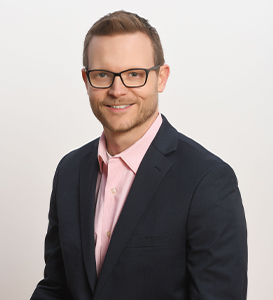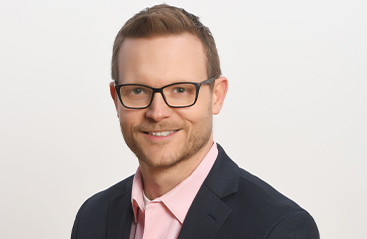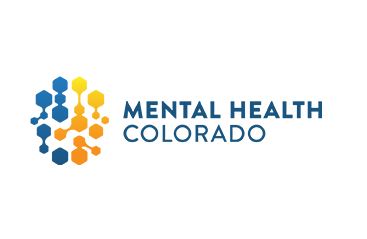In February, I had the pleasure of chatting with Dr. Benjamin Tallman, a licensed psychologist and the psychology program training director in the Department of Physical Medicine and Rehabilitation at UnityPoint Health-St. Luke’s Hospital. Dr. Tallman actively focuses on enhancing patients’ ability to manage their acute and/or chronic pain utilizing non-opioid, non-pharmacological methods. Our conversation is summarized below.
 Tell us about yourself – what is your background and what sparked your interest in acute pain management?
Tell us about yourself – what is your background and what sparked your interest in acute pain management?
I have spent most of my professional career thus far in Cedar Rapids, Iowa. I completed a bachelor’s in psychology and sociology at Coe College and then received a doctorate in counseling psychology from the University of Iowa. I initially started working with patients who had pain concerns in graduate school, but I had always been fascinated by the mind-body connection and understanding how the biopsychosocial model can influence the experience of pain and pain related concerns. It made a career in health/rehabilitation psychology was a natural fit for me. After I received my PhD, I completed an internship in clinical psychology and a post-doctoral fellowship in medical rehabilitation psychology at the Edward Hines, Jr. VA Hospital in Chicago. I loved working with the veteran population there; it is a population that needs more attention. However, when a position became open back home in Cedar Rapids, I jumped at the chance because I still have family in the area.
Can you tell us a bit about your hospital?
I practice at UnityPoint Health-St. Luke’s Hospital in Cedar Rapids. The hospital has over 500 beds and is one of the key players in eastern Iowa in helping patients manage pain using non-opioid approaches. St. Luke’s has a busy emergency department and is a regional leader for patients requiring rehabilitation. UnityPoint Health provides care to metropolitan and rural communities in Iowa, Western Illinois, and Southern Wisconsin.
What patient populations do you serve?
Typically, we work with patients ranging from 18 to those that are in their 90’s. Many of the patients that I see are women—approximately 60-70%. I work in both the inpatient and outpatient setting focusing primarily on patients with medical concerns. In the inpatient setting, my time is spent on the physical medicine rehabilitation unit where I see patients that have had spinal cord injuries, stroke, amputation, or traumatic burns, and I provide a lot of non-pharmacological pain management psychological services. In the outpatient setting, most of the patients that I treat need help managing their chronic pain. These patients could have fibromyalgia, comorbid mental health issues like depression and anxiety, substance use at times, or any other pain condition where someone could benefit from our types of services. Most of the outpatient treatments are group-based using Cognitive-Behavioral therapy (CBT) or Acceptance and Commitment Therapy (ACT).
What inspired your group to create a non-opioid perioperative pain management experience for patients?
We have been utilizing a non-opioid pain management experience for a while now. The impetus was the opioid epidemic and providers being fearful of prescribing opioids. I think we have done a great job of reducing opioid usage in our hospital system, but not so well with identifying safe, alternative treatments. Non-opioid evidence-based treatments are needed and can be cost effective ways to treat and manage acute and chronic pain. In the inpatient setting, I typically do a lot of acute pain management like clinical hypnosis, mindfulness mediation, general diaphragmatic breathing. One of the things we are excited about is a virtual therapeutic reality program at St. Luke’s, which utilizes a virtual reality (VR) headset. We have trained four units and are working on expanding to other units. So far, the patients have really enjoyed this therapy because it takes their mind of off their pain by disrupting pain pathways in the brain. For example, patients can immerse themselves in a virtual environment where they are swimming with dolphins or skydiving. The virtual experience is customizable.
As I mentioned earlier, all our outpatient treatments are focused on patients that have chronic pain. We utilize a group-based approach because we find that providing patients with chronic pain concerns with the opportunity to interact with others with similar ailments helps them not to feel alone in their pain. We utilize cognitive behavior therapy (the gold standard), and each patient has 8 sessions that are 90 minutes each. We are planning to launch an acceptance and commitment therapy group soon.
This year, we started a non-opioid multi-disciplinary inpatient pain consultation for our acute pain patients. My psychologist colleagues and I make rounds with the physiatrist to apply a biopsychosocial approach to manage pain that is having an impact on a patient’s functioning and quality of life. Our goal is to increase function and quality of life. We are also planning to create a multidisciplinary outpatient program that will be a one-stop-shop to get evidence-based non-opioid pain management treatment like behavioral health, psychological treatment, physical therapy, and occupational therapy. We are also exploring other complimentary services like tai chi and yoga, acupuncture.
Unfortunately, we have had difficulties with some insurance companies offering reimbursement for delivering evidence-based psychological services as non-opioid alternatives for pain management. To address these barriers, I serve on the Executive Council of the Iowa Psychological Association (IPA) and I work with IPA’s advocacy team to address issues related to reimbursement at the state and federal levels.
What positive downstream affects have you seen since you implemented your program?
The feedback we have received from patients and colleagues on our VR program and non-opioid multi-disciplinary inpatient consultation has been very positive. As we continue to get the word out to our colleagues and educate our patients about our available non-opioid pain management therapies, we will continue to see an uptick in their use.
What are the next steps/future directions?
Education is a big focus of ours. It is important to make sure that people are aware of the full spectrum of non-opioid pain management options available to them. We are also continuing to take small steps to change the culture of pain management and patient-centered care. We are focused on building our patients up, empowering them, and enhancing self-efficacy to manage their pain. We have a lot of work to do.



